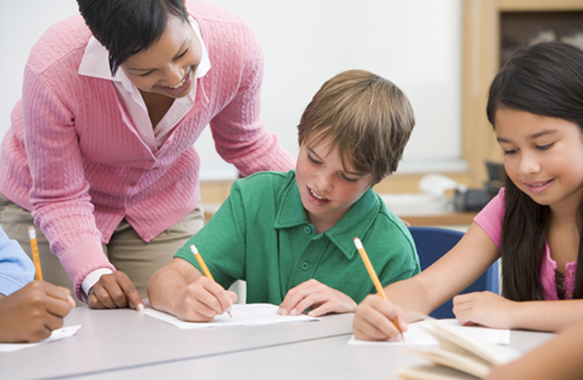Is Teacher enough to turn the tide to take misery and twirl it into happiness? Might the affect of a good teacher-student relationship in a classroom be enough to change a life? Could it be that an Educator is but one influence amongst many? And does each moment become a building block for learning, a broader education, and one that shapes a life? Whatever you believe each one of us can consider the effect of our emotions. Policymakers too might think about looking past the numbers. Scores soar when a curriculum is truly comprehensive, when the whole child is considered. Our emotions are our common core, or at least a theory to ponder…to play with.
Students’ Happiness at School Goes a Long Way In Learning
Got out an old study of school climate that my good and faithful research team conducted a fistful of years back. Why is a good learning environment so important? When students feel safe, enjoy being where they are and are happy, they tend to return more often, they tend to behave and they tend to learn.
The overall climate of a school begins in the classroom. My research team discovered that classrooms could be new, old, high tech, low tech, large, small, near the principal’s office or far away. It didn’t matter. What mattered was (and is) the teacher. The teacher’s attitude toward students (in research lingo) accounted for most of the variance in students’ perceptions of safety, enjoyment and happiness.
Happiness might be the most overlooked variable of all. To be happy at school, we found students had to feel as if they were a valued member of the class. We found students had to be successful at something they believed was of value.
Elementary schoolchildren are sometimes made to feel happy when they please their teacher, but helping them understand that happiness is not “approval” is a difficult construct to comprehend. Recognizing young children for “random acts of kindness” or “subtle successes” is different from giving them rewards for doing what is expected.
Young adolescents in the middle grades and teenagers in high schools tend to respond to the same unexpected, unsolicited stimuli. That is, randomly and intermittently letting secondary students know they are valued and respected sans rewards for attaining something seems to produce happier charges. We also found that secondary school students like a good joke now and then. They like to laugh, and laughing sometimes elicits positive outcomes.
Many would say the principles mentioned above are simply common sense and can be applied to just about any environmental situation. I would agree. For some reason in education, however, we are expected to collect data in support of our theories, beliefs, actions and deeds.
So, the next time you observe students at any grade level smiling, having fun or even laughing, don’t automatically think they are not learning. They might be on the verge of discovery. They might be thinking concretely that “happiness is a warm puppy” (Peanuts, 1962) or more abstractly that it is finding one’s true meaning of life — learning for the sake of helping others, or more directly “family, faith, and ducks; happy, happy, happy” (Phil Robertson, “Duck Dynasty,” 2013).
David L. Hough, Ph.D., is Professor and Interim Dean, College of Education, Missouri State University. You may contact him via email at DavidHough01@gmail.com Views expressed in this column are solely those of Dr. Hough and do not necessarily represent Missouri State University positions.












Leave A Comment